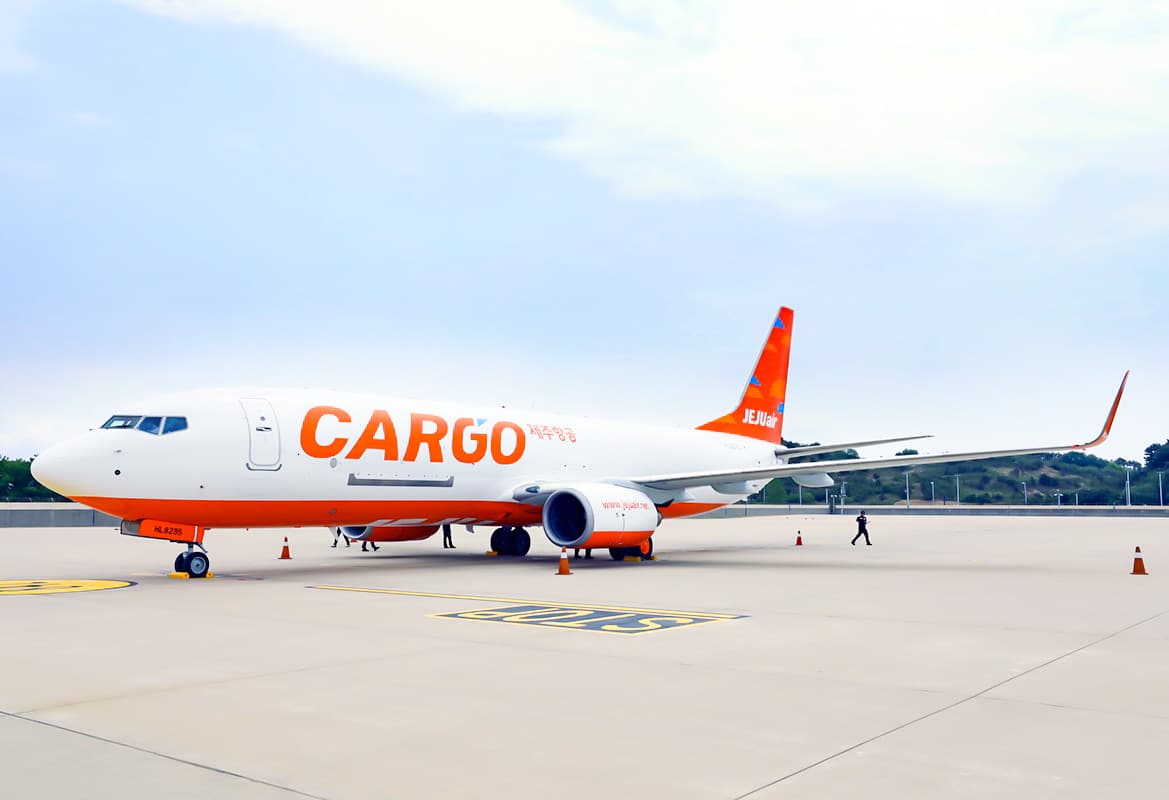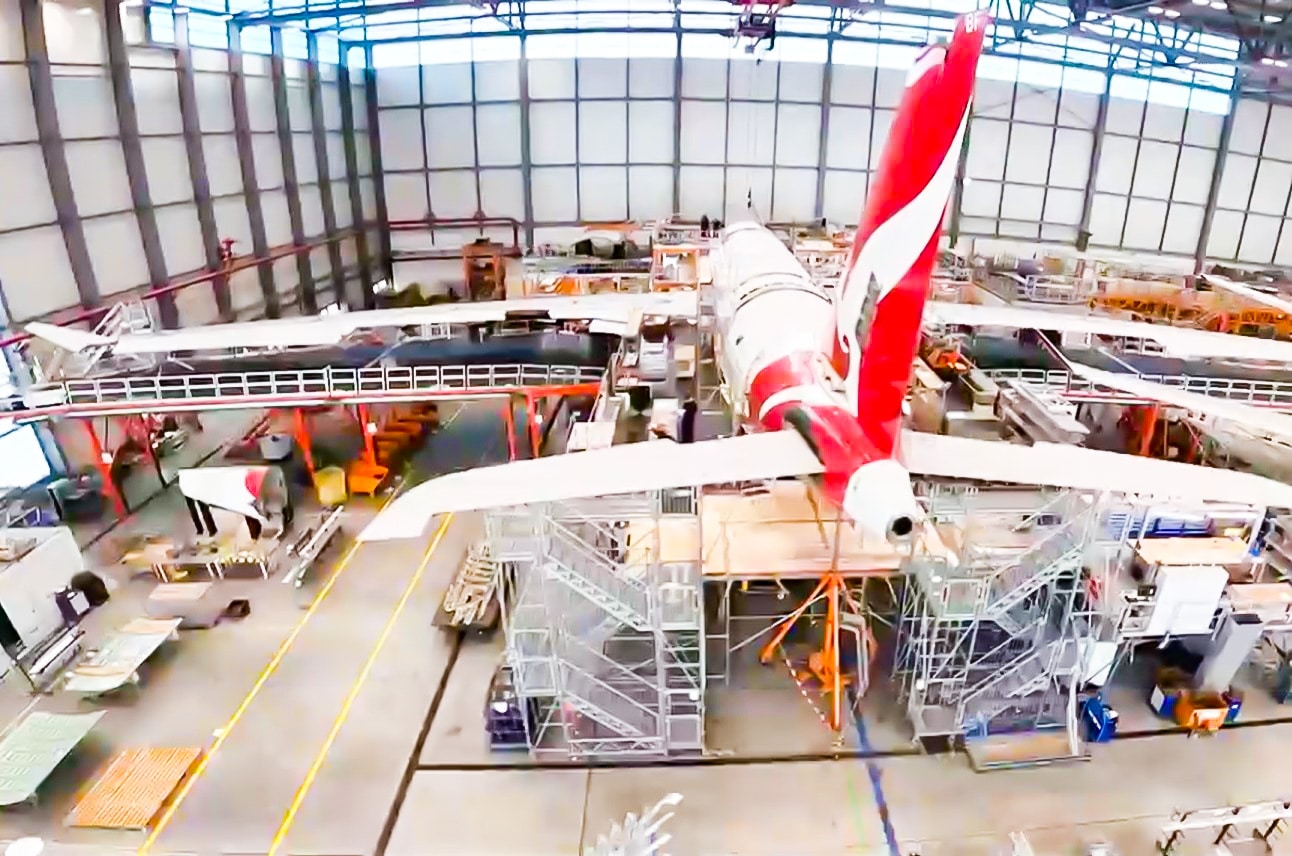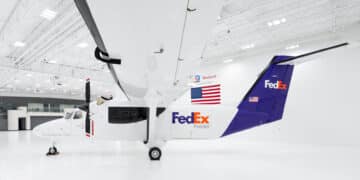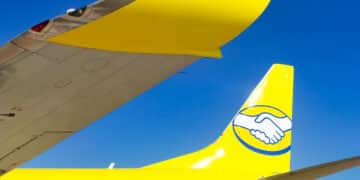Before market normalization resumed in China, evidence of the growth potential in the Asia-Pacific region had already begun to unfold in emerging markets with the introduction of startup carriers and an increasing number of freighter aircraft entering service with new operators.
In the midst of the market settling and growth slowing, at least seven Asian carriers started operating freighters for the first time in 2022, including Indonesia’s RGA-Black Stone Airlines and MIAT Mongolian Airlines, with at least five more expected to follow in 2023.

A key country in global trade, China recently eased restrictions and began to normalize trade but has been the epicenter of concerns surrounding the market downturn.
China still leads the global market for cross-border e-commerce with 30% of the distribution but has seen its volume decline by six percentage points since 2019 due to a lack of international capacity, Cargo Facts Consulting Managing Director Guillermo Ochovo said during a presentation on “Prospects and obstacles for future fleet development” at Cargo Facts EMEA 2023 in Dubai.
As oil prices stabilized, inflation slowed and global trade showed small signs of growth. The peak month of November saw cargo volume decrease by 18.6% year over year due to reduced trade and disruptions in supply chains caused by China’s rising COVID-19 cases, with capacity 4.5% lower when compared to 2021, according to the International Air Transport Association (IATA).
While global export orders continue to decrease, IATA reported that the Asia-Pacific region was the world leader last year, accounting for 32.6% of the cargo tonne-kilometers.
Asia accounted for 5.9% of global air cargo traffic in 2021 and shipped more than 2.8 million tonnes in air freight, according to Boeing’s 2022 World Air Cargo Forecast.
Global fleet growing
Cargo Facts reported in July that Boeing’s Commercial Market Outlook (CMO) predicts 2,795 units will join the global fleet between 2022 and 2041, which is 185 more than had been predicted in its 2021 CMO. These consist of 515 production large widebodies, 425 production medium widebodies, 555 widebody conversions and 1,300 narrowbody conversions. Boeing anticipates the total fleet to grow from 2,240 freighters at the end of 2021 to 3,610 by the end of 2041.
Almost 40% of all new deliveries and conversion redeliveries in the next twenty years will be for the Asia-Pacific region, according to Boeing. As a result, the Asia-Pacific region will have 1,260 freighters by the end of 2041, with China’s freighter fleet in particular more than tripling in the next twenty years to 820 units.
For this analysis, in which Cargo Facts examined the freighter aircraft based in the Asia-Pacific region, “Asia Pacific” is defined as everything east of the Caspian Sea, including Kazakhstan, Uzbekistan, Turkmenistan and Iran as well as Australia, New Zealand, Papua New Guinea and Nauru.
Aircraft considered in the analysis include all Airbus and Boeing freighter aircraft — whether production or converted — along with ATRs, BAe 146s and Saab 340s.
Eighteen countries hosted 460 active freighters in the Asia-Pacific region as of Feb. 28, according to Cargo Facts research, an increase of nearly 11% compared with twelve months ago. This was despite one less country serving as a base for cargo aircraft.
More than half of all the dedicated cargo planes were registered in China, with a mix of 245 units that included thirty-one 747Fs, thirty-eight 777Fs, fifteen A330Fs, twenty 767Fs, nine A300Fs, sixty-one 757Fs, twenty-three 737NGs and forty-eight 737 Classics.
South Korea is second, with thirty-nine units, followed by Indonesia, which added six aircraft to bring its total to twenty-seven units.
Based on the numbers, China appeared to be relatively well balanced with 113 widebodies and 132 narrowbodies, while South Korean carriers operated a majority of widebodies with twenty-one 747Fs, twelve 777Fs, one 767F and just five 737-800Fs. Indonesia was the opposite with twenty-five 737 Classics and two 737-800Fs.
Outside of China, the number of freighters was evenly dispersed between widebodies and narrowbodies in the other countries, which have a combined total of 106 and 109, respectively.
737 Classics passing the baton
At some point, the 737 Classic will be forced to retire, but for now the aircraft is still one of the most widely used freighter types in the region with four more raising the total in service to 108. China’s 737 Classic total decreased by three aircraft and the Philippines saw two Classics depart from its airspace, but Indonesia increased its freighter count by seven, including six ex-Chinese-operated 737-300Fs that were being phased out and replaced by 737-800Fs.

In 2022, there were multiple new sightings of the 737NG in South Korea when Jeju Air and Air Incheon added their first and fourth 737-800F, respectively. Air Incheon retired its single 737 Classic by the end of 2021, committing to operating 737NG freighters.
Indonesia-based My Indo Airlines became the first operator to fly the 737-800 freighter in the country and was soon followed by Rimbun Air Cargo, which added its first on lease from Aero Capital Solutions.
In China, Shandong Airlines and e-commerce giant JD.com entered the freighter sector with 737-800Fs, as Central Airlines added its second and third 737-800F in 2022 and prepared to hand the baton from the 737 Classic to the NG.
777Fs on the heels of 747 freighters
Long before Boeing gave a final tribute and farewell send-off to the last production 747 freighter, the writing was on the wall for the “Queen of the Skies.” It would only be a matter of time before the iconic quad-engine freighter would be replaced by twin-engine large widebodies such as the 777F, which joined more fleets and increased its presence in Asia by eleven aircraft and only trails 747Fs by fourteen units.
The majority of 777Fs in the region are located in China, South Korea and Taiwan, with the bulk of them operated by Air China, China Cargo, China Southern, EVA Air and Korean Air. The transition away from the 747F — especially -200Fs and -400Fs — will likely accelerate each year as carriers retire or park the historic Boeing freighter for twin-engine options that are more efficient and comply with noise and emissions requirements, such as factory 777Fs and, in the years ahead, 777 conversions, 777-8Fs and A350Fs.
Singapore Airlines added two DHL-owned 777Fs in March 2022 on a CMI basis and will operate five units for the express carrier after becoming DHL’s fourth global partner to operate the factory-built freighter.
In addition to adding its third 737-800F, Central Airlines began operating its first 777F in September 2022.
Older narrowbody freighters get second wind
Even though feedstock reserves are dwindling, 757-200Fs and 767Fs continue to thrive in the Asia-Pacific region.
SF Airlines took redelivery of three 757-200PCFs and expects to add a combined total of five more 767Fs and 757Fs in 2023. The airline also placed into service five 767-300BCFs in 2022 and told Cargo Facts that it had no plans to retire any of its freighters, some of which are more than thirty years old.
SF Airlines has sourced feedstock for its 767-300BCF conversions from Air Canada and Euro Atlantic Airways, while securing the few remaining 757-200s from TUI and American Airlines.
Fellow China-based carrier YTO Cargo Airlines signed a deal with AerSale for seven 757-200PCFs in 2021 and has taken five. YTO also placed its second 767-300BDSF into service in June 2022.
South of the Asian continent, BAe 146-300QT freighters continue to soar above Australia, but with one less aircraft than the previous year. Cobham Aviation and Pionair — which added a third BAe 146 to its air operator certificate — are the only carriers in the region flying the narrowbody quad-engine freighter type. Pionair told Cargo Facts in December 2022 that its BAe 146 300QTs support Qantas, FedEx, Australia Post and Toll, along with some new opportunities, and the airline plans to operate the aircraft for years.
Airbus freighters in Asia
A key contributor to diversification of the freighter fleet, Airbus entered the narrowbody segment with its A321 and A320 freighters, which have begun to gain interest among Asia-Pacific airlines, with Qantas and IndiGo operating three and two A321P2Fs, respectively.
With only eighteen A330Fs in service in China and Malaysia, the A330F has generated attention in the region. DHL partner Air Hong Kong took delivery of its fourth A330-300P2F on behalf of the express company in August 2022 and remains the only operator of A330 conversions in the region.
Elbe Flugzeugwerke (EFW) earned its supplemental type certificate from the European Union Aviation Safety Agency for its A320P2F program in March 2022 and soon after saw its prototype aircraft enter service with India-based Pradhaan Air Express.
Transition in motion
Although older freighters are proven commodities, the cost to maintain them will eventually exceed projected operational expenses and bleed into revenue earnings, operators have told Cargo Facts.
Many carriers have begun securing replacements that are cost effective and capable of thriving in an industry that will be driven by express shipping and e-commerce.

One announcement of note is China Southern Airlines Leasing, the leasing arm of China Southern Airlines, signing a memorandum of understanding for ten A320P2Fs with EFW in 2022. If the deal is finalized, it is unknown which carriers will put the freighters into service.
Another carrier set to become an Airbus freighter operator is Japan Airlines’ low-cost subsidiary, Spring Airlines Japan, which will fly Japan-based Yamato Transport’s three upcoming A321-200P2Fs starting in 2024.
Qantas has begun phasing out its 737 Classics and soon will become the largest operator of Airbus narrowbodies in the region after placing an order for six A321Fs, which are expected to be delivered between 2024 and 2026, while adding two A330-200P2Fs to its fleet. The A330s are undergoing conversion in Dresden (DRS).
China Postal Airlines will build its platform with Boeing and become the fifth Chinese operator of the twin-engine widebody after the airline agreed to purchase two 777Fs, the first of which joined the fleet this month.
By this time next year, more carriers — some new — will have entered the dedicated air cargo sector, enhancing lift capacity in the region.
These include Turkmenistan Airlines, Texel Air New Zealand, Jiangxi International Cargo Airlines, Vietnam Airlines and Malaysia-based low-cost carrier AirAsia, which will add three A321Fs this year to fly for its logistics division Teleport.
Air cargo growth have driven operators in the Asia-Pacific region to turn to a combination of production, converted, widebody and narrowbody freighter types, and the rest of 2023 will bring more change to the area as renewal and expansion continue to influence fleet decisions.
Don’t miss our two upcoming events that are essential for stakeholders in Asia and Latin America: Cargo Facts Asia, taking place April 17-19 in Singapore, and Cargo Facts LATAM, taking place May 15-17 in Panama City. Register today.



